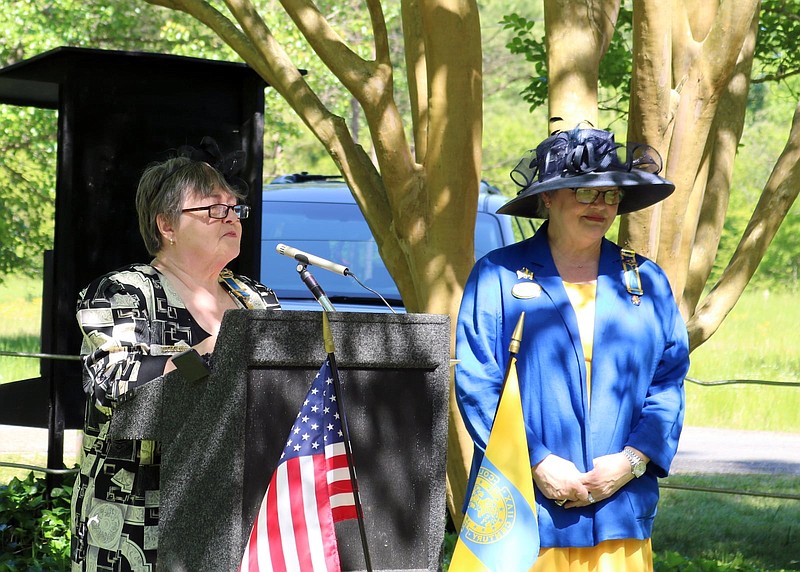The John Eliot Chapter Colonial Dames 17th Century has dedicated Camp White Sulphur Springs Confederate Cemetery as a historic site on April 25.
The chapter unveiled a historical plaque and held a dedication which was attended by members from Hot Springs, Hot Springs Village, Pine Bluff, Cabot, Searcy, Stuttgart, Little Rock and Illinois, according to a news release.
One of the CD17C major missions is to mark and preserve historical sites. Since its inception, the chapter has marked two historical cemeteries, Shiloh Methodist Church Cemetery and Hunter's Chapel Church Cemetery. National CD17C must approve the marking of an historical site by chapters and state societies.
CAMP BACKGROUND
"In the early stages of the war, Camp White Sulphur Springs served as a recruiting and staging area for volunteers who came from Pine Bluff and the surrounding towns to organize and assign troops to various units," according to the release.
"Early in the war, the Ninth Arkansas Volunteer Infantry Regiment and Fagan's Guard, which later became B Company of the Second Arkansas Infantry Battalion, trained near White Sulphur Springs. Most of the young men who joined the Confederate army at Camp White Sulphur Springs were deployed to engagements in the east, leaving Arkansas exposed to Union attacks," according to the release.
"Following the Battle of Pea Ridge in 1862, Governor Henry Rector began stopping Confederate troops passing through the state from Texas and Indian Territory (present-day Oklahoma) to engagements in the north and east and rerouted them to Pine Bluff and Camp White Sulphur Springs attempting to defend southern Arkansas.
"The troops from Texas and Oklahoma brought with them measles and smallpox. Many of the soldiers encamped at White Sulphur Springs were infected and eventually died. Striving to isolate the infected soldiers, the Sulphur Springs Hotel, female academy, and Methodist church were all converted into hospitals to house the ill soldiers. The death rate among the infected was high; while the exact number of deceased is unknown, it is estimated to have been between 150 and 175," according to the release.


